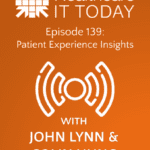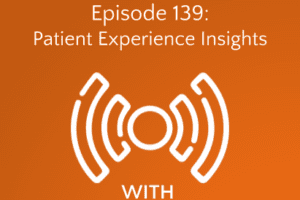The following is a guest article by Dr. Sandy Whitehouse, Chief Medical Officer, Tickit Health.
 Anxiety, depression, and suicide rates, already rising pre-pandemic, are significantly increased amongst our youngest. As things like anxiety and depression take root in a child, their academic performance and socialization skills also suffer. This has the likelihood to have far-reaching economic and societal impacts we are yet to recognize which may see a future with far fewer youth able or willing to reach their potential.
Anxiety, depression, and suicide rates, already rising pre-pandemic, are significantly increased amongst our youngest. As things like anxiety and depression take root in a child, their academic performance and socialization skills also suffer. This has the likelihood to have far-reaching economic and societal impacts we are yet to recognize which may see a future with far fewer youth able or willing to reach their potential.
As schools re-open in the Fall, time-constrained educators will need tools to better connect with and understand the needs of youth, as academic success is strongly aligned with good physical, mental and social health. In education, this is frequently referred to as Social and Emotional Learning (SEL), and like what we in healthcare refer to as Social Determinants of Health (SDoH). Regardless of the terminology, what is known is that unless we address these ‘foundational needs’ of students, they won’t thrive, be it physically, emotionally, or academically. And we will all suffer.
And while our healthcare systems continue to think in terms of clinical diagnosis and treatment of anxiety and depression, as well as social determinants of health, an emerging reality is taking root in thought-leading communities around the world. That reality is that the education system may be a powerful ally in healthcare’s mandate to improve the mental and physical health of future generations. But while having common but separate goals and objectives, in most cases education and healthcare systems don’t communicate or collaborate. This presents a great opportunity if we look beyond our silos of “healthcare” and “education,” and instead take a “patient-centric” view. Your patient, after all, is someone’s student.
The good news is that advances are on the horizon with novel programs linking the academic community with the healthcare community to support our youth.
King County, Washington, partnered with Tickit Health and Seattle Children’s Research Institute to launch a universal digital screening program in 50 middle schools. Referred to as the School-Based Screening, Brief Intervention and Referral To Services (SBIRT) program, it not only uses validated tools to detect symptoms of at-risk behaviours, but also includes carefully crafted indicators such as, “At school there is an adult who really cares about me,” or “Others have said that I am good at …” to gather information about more protective factors such as strength and resiliency.
Other systems didn’t have the same level of sensitivity as Tickit Health. “We looked at all of the validated screens, and they all looked for problems. Our kids are not just a set of problems and symptoms,” said King County school-based SBIRT program manager Margaret Soukup, noting that Tickit Health enables the screening “to have a deeper reach.”
The screening is presented as a health and wellness initiative and it’s up to each school to select at which grade to administer it, ranging from grade 6 to grade 8. More than 8,000 students participated in the program in its second year and the county is on track to reach 5,000 students this year, even though most schools transitioned to online learning during the pandemic.
Using Tickit’s dashboard, school counsellors monitor student responses in real time. A green flag means no intervention is required, a yellow flag indicates the need for a brief intervention of a non-urgent nature, and a red flag alerts to concerns that must be addressed immediately or within 24 hours. According to data from the 2019-20 school year, nearly half of participating students received brief intervention, and 15 percent were referred to services.
“This is the beautiful part of Tickit,” said Soukup. “The students are taking the screen and in real time, the counsellors see the results at the backend … so they can triage and be really efficient.”
Since introducing the program, counsellors have uncovered a vulnerable group who would normally be extremely difficult to identify: internalizers, those students who appear to be doing great on the surface but are actually harbouring unsafe thoughts.
“Counsellors are just unbelievably grateful for the screen because for whatever reason, some of these students will really say what’s going on,” said Soukup.
Another new program is Ascension Michigan School-Based Health Centers (SBHC) and their use of Possibilities for Change’s Rapid Adolescent Prevention Screening (RAAPS), a standardized, validated risk screening that identifies the greatest mental health and risk factors impacting youth health, wellness, and academic success.
With only 21 questions, RAAPS can be completed online in just five minutes – and the automated, tailored risk-reduction messaging enables any provider or professional working with youth to effectively identify and intervene on risk factors in any setting.
Ascension Health’s SBHC programs have also utilized RAAPS for population-wide screening across both their middle and high school programs. School-wide screening helps to ensure previously unidentified issues are brought to the surface and youth receive the support they need.
One SBHC staff member described the impact of this initiative: “The RAAPS assessments gave us a better understanding of how to help these students because we had a full view of the issues impacting them, not just the issues we were traditionally accustomed to identifying. It’s one thing to have an assumption; it’s another thing to have actual data— that makes it clearer.”
Bottom line-the healthcare system should take advantage of the education system’s similar interests as a ‘first line of defense.’ Let the schools assess the mental, behavioral, and SEL needs of kids through validated and standardized screening and triaging tools, and where they can support them with school counselors and psychologists. When the education systems’ efforts reach a limit in their mandate, let that information flow to the health system where it can pick-up support for our future generations. For the most acute of cases, create a referral mechanism where the school can rely upon the healthcare system efficiently. Given much of the assessment can be done now digitally and remotely, it provides a perfect means of keeping tabs on how our youth are doing even if they are not walking the halls of our schools and with peers in the lunchroom as often. Combined with telehealth, we have the tools to innovate at a systemic level and not lose a generation.
For young people facing mental health challenges, identifying risk and providing digitally empathetic support can be a game-changer.
Again, your patient is someone’s student. Why not work together.













